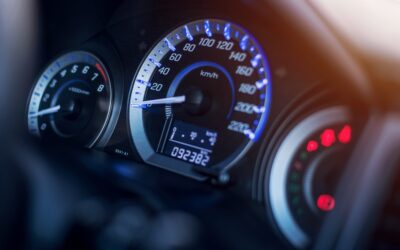Say you’re learning to drive, or your son or daughter is learning to drive. It’s common for learner drivers, or the parents of learner drivers, to buy a new car in advance, so that the new driver will have a car once they’ve got their driving licence.

But for as long as the learner’s taking their lessons, that new car’s going to be inactive. Which raises the question – how long can a car sit without being driven?
What are the problems leaving a car without driving it?
The key issue here is the battery. Car batteries work using electro-chemical reactions, and these reactions don’t stop when you switch your car engine’s off. So even when your car’s not being used, the battery will continue to drain.
Some of the more advanced car models have an array of power-hungry features that will continuously drain your battery’s charge, even when you’re parked. Examples include:
- Alarm systems
- Onboard computers
- Saved preferences for things like seat positions and temperature.
So the length of time you can leave your car without the battery dying will vary from car to car. Other factors to consider include the age of the battery and the climate. Batteries drain at a faster rate in hot weather, and cold weather can bring its own problems.
When you drive your car, a current is applied to the battery, which will help it to regain its charge. For this reason, experts recommend that you never leave your cars inactive for too long. To prevent the battery from losing its charge, cars must be driven at least once a month, but once a week is better.
Read our complete guide to taking care of car batteries here.
Taking Care of Unused Cars
So what should you do if you’re a learner, and your car’s waiting for you to pass your test? And what if you’ve bought a car for your son or daughter, for when they have their licence?
If you’re a learner, you’re allowed to get some driving practice in between lessons, so long as you’re accompanied by an adult in possession of a full driving licence, aged over 21 who has held a Full UK or EU licence for over a year. If you’ve bought a car for your son or daughter, you could drive it yourself so long as you’re named on the insurance, once a week – or enough to ensure that the battery doesn’t lose its charge.
It might be enough to simply start the car up and let it run for a short while. This will warm the oil, charge the battery, and help to ensure that everything’s working like it should. But it’s also important to pay attention to the tyres. Car tyres can last for up to a decade before they start to degrade, but if they sit unused for too long, the rubber can start to rot.
A 15-minute drive at least once a week will help keep everything ship-shape. If this isn’t possible, and if you’re not sure how long it’s going to be before that new car’s driven regularly, then consider disconnecting the battery for the duration of the idle period.
Where to Park Your Car if it’s Not Being Driven
If you’re going to let a car sit unused for a while, try and keep it in a place where it can stay as dry as possible, and preferably out of direct sunlight. Exposure to the elements, and the issues of temperature and damp they can bring, can result in a number of problems.
Also, cars that are left unattended for a long period of time can bring unwanted attention. We’re not just talking about thieves – though that is an issue. If you park your car on your street for too long, your neighbours may assume that it’s been abandoned, and they could call to get it towed. This is yet another reason why it’s a good idea to drive your car at least once a week. If nothing else, it will help you to ensure that you’re not parked in the same place for too long!
And don’t forget about insurance. If your car is parked on a public road, you’ll still need to tax and insure your car as usual.
Once you, or your son or daughter, has finally passed the driving test, there’s one more important thing to remember. Car insurance! At Go Girl, we offer new drivers the cover they need at an affordable price. Head here for more information.



